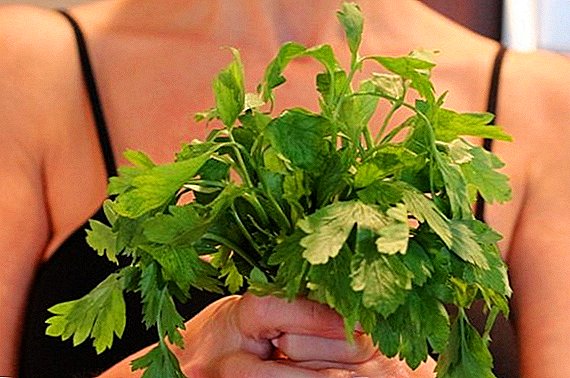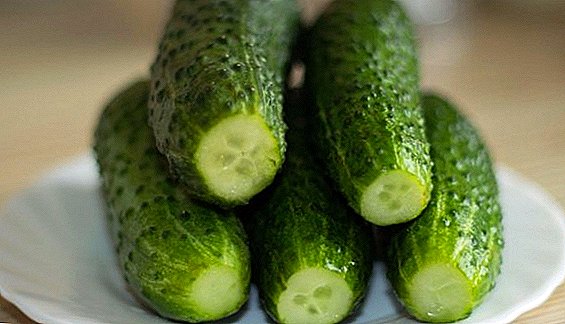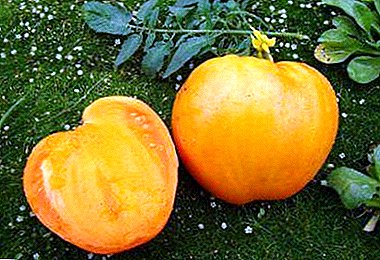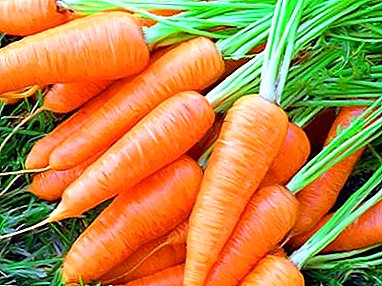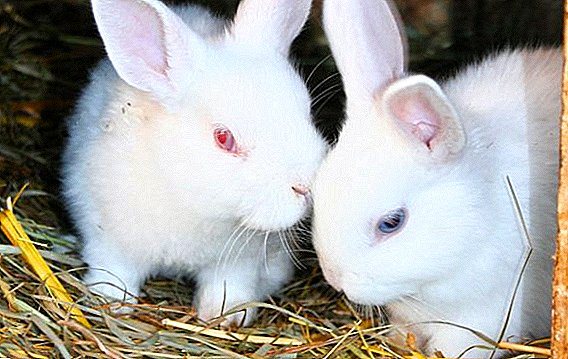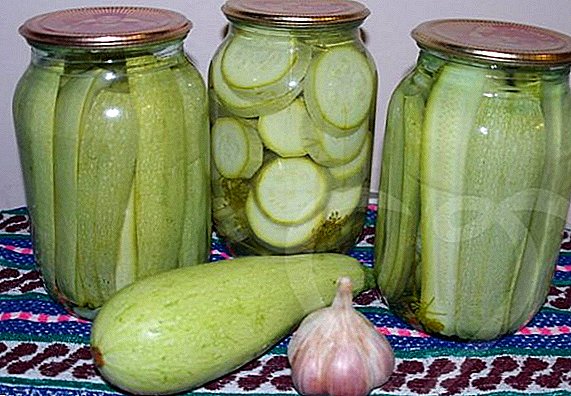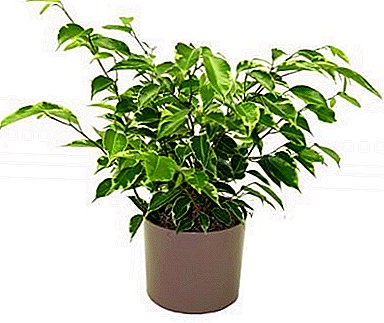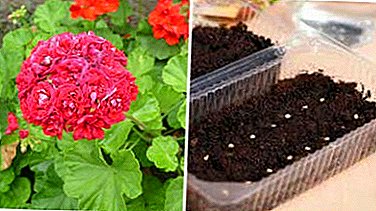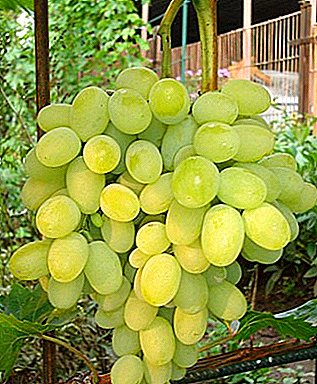
Growing grapes in the garden is an interesting and prestigious occupation.
And in most of the territory of Russia is also risky.
To get the result you need to choose the right grade.
The Augustine variety described in this article is a worthy candidate for a place in your country house.
What kind is it?
Augustine or Pleven steady - table grape variety.
Also known by other names: Phenomenon V25 / 20.
It is rarely used to produce wines and juices industrially, but for an amateur grower, such an application is possible.
Known table varieties include Karmakod, Korinka Russkaya and Druzhba.
Grapes Augustine: variety description
 Bush This variety is large, strong. Beautiful dense green leaves are slightly dissected, the shape is close to round.
Bush This variety is large, strong. Beautiful dense green leaves are slightly dissected, the shape is close to round.
Stems brown with specks. Flower bisexual, reliably pollinated in bad weather days, contributes to pollination of other bushes nearby.
Both Amethyst, Gurzuf Pink and Galahad are distinguished by bisexual flowers.
Ripe clusters look great on the bushes. They are loose, berries are well ventilated.
Bunches often with lateral wings, weight reaches 700-800 g.
Berries at the time of maturation of a noble amber color with a slight white bloom. The shape is uniformly elongated. Sizes 25-27 mm to 15-18 mm and weight - 4-8 g. Peel of medium density, eaten without problems.
Sweet flesh has a thick texture and a pleasant smell.
In the center of the berries are bones, up to 5-6 pieces. Ripened clusters can decorate the bushes up to two or three weeks.
A photo
More clearly with the grapes "Augustine" can be found in the photo:




Characteristics and features
 The characteristics of Augustine are impressive. the main advantages are:
The characteristics of Augustine are impressive. the main advantages are:
- ultra high yield;
- frost resistance is above average;
- unpretentiousness in cultivation;
- survival rate of seedlings;
- early ripening.
Among the high-yielding varieties, it is also worth noting the Memory of Domkovskoy, Alex and the Gift of Zaporozhye.
With mass cultivation, this variety is able to yield in 120-150 centners per hectare. Amateur with the right care can count on 50-60 kg of berries from the bush.
Frost resistance allows you to distribute this grape in southern and central Russia. Keeps short frosts up to -24 degrees without hidingIn more severe winters needs protection from the cold.
The Tukay, the Beauty of the North and the Pink Flamingo also belong to winter hardy varieties.
The harboring is done in the usual way for the grapes: prepared vines are placed in a ditch dug in advance, covered with film. It is important that the film does not touch the stems!
Top cover with spruce branches or straw, shower with earth. In the spring after the final disappearance of snow, you can open the bushes. To avoid burns, it is better to do it in the evening or on a gray day.
Variety Augustine unpretentious to the conditions of cultivation. It grows well on various soils in a wide range of humidity.
Aleshenkin Dar, Giovanni and Denisovsky.
Resistant to the lack of sun and strong wind. It does not need special care methods, special dressings.
In order to obtain a large crop of high-quality berries, it is necessary, nevertheless, to choose a plot with chernozem or loamy soil, with a sufficient amount of light and closed from wind gusts.
Caring for Augustine is easy. In the first two years, only loosening the earth and fertilizing organic matter in the fall.
 It is necessary to water only in long dry weather. In subsequent years, it is necessary to form a bush - to nip, trim, remove stepsons and excess leaves.
It is necessary to water only in long dry weather. In subsequent years, it is necessary to form a bush - to nip, trim, remove stepsons and excess leaves.
These simple measures will help to avoid lower yields and chopping berries.
Cuttings and seedlings of Augustine are well stored, have a small percentage of death during transportation. The survival rate during landing reaches 90% - a very high figure.
Even in central Russia, Augustine grapes will allow to eat berries in August. Over ripening has little effect on fruit overload, which compares favorably with similar varieties in other parameters.
Hurrying with the harvest is not necessary, berries can stay on the bushes for up to three weekswithout losing commercial quality.
Pests and diseases
Augustine is a variety resistant to many diseases.
Although resistance to fungal diseases is above average, it is worth taking measures against mildew and oidium, there is a susceptibility to these diseases.
For prevention of oidium in spring, when air is heated above 18 degrees, 30-40 g per 10 liters of water are sprayed with sulfur; for treatment, the concentration of the solution is increased 2.5-3 times.
During the ripening of berries, they are limited to spraying a pink solution of potassium permanganate.
To fight mildew at the end of flowering, use the Bordeaux mixture or preparations Thanos, Poliram and others.
Phylloxera also dangerous for this variety, you need to fight it.
For prophylaxis, treatment is performed at bud break, they use Actellic, Fozalon and others. If after blooming the leaves on them appeared growths phylloxera, repeat the treatment.
 Happens nailingthen the berries rot, spoil. To combat it from the means allowed on the personal plots, you can use fitoderm, but not during flowering.
Happens nailingthen the berries rot, spoil. To combat it from the means allowed on the personal plots, you can use fitoderm, but not during flowering.
But to gray rot Augustine is immune.
Wasps, if affected, then, for the most part, the fault of the husbandman. You just need to inspect the clusters in time and remove the rotting berries.
As for anthracnose, bacterial cancer, chlorosis, bacteriosis or rubella, you can familiarize yourself with these diseases of grapes in separate materials of the site.
If the summer was cool and rainy, cracking and rotting of the berries may occur.
The described grape variety Augustine has attractive qualities for the amateur. Therefore, he is recognized, has many fans. It can be grown in different regions of Russia.
Because of its simplicity, reliability and resistance to many diseases is a suitable choice for newcomers to the vineyard business.


